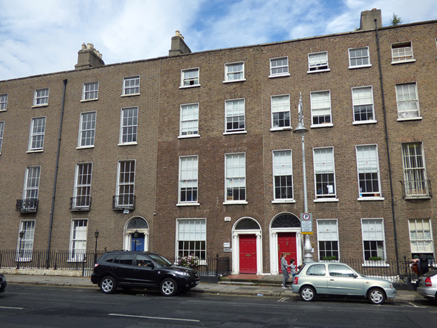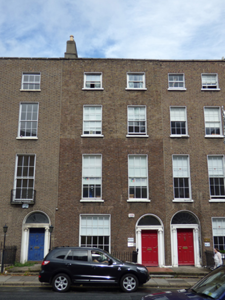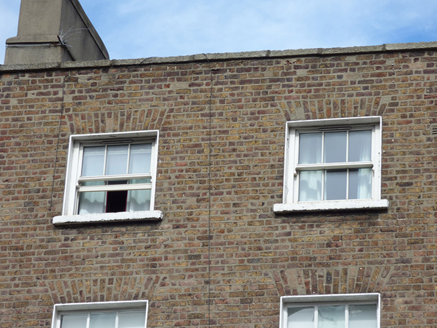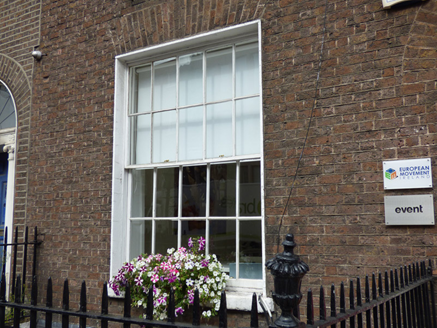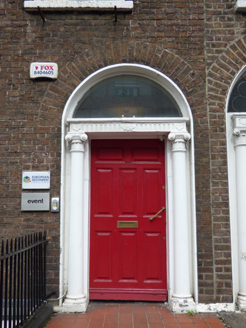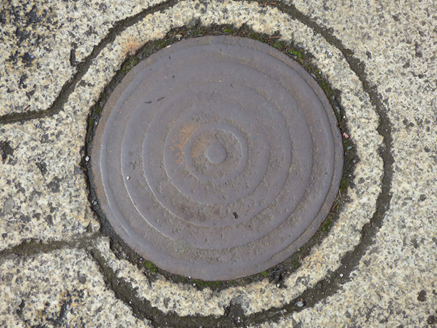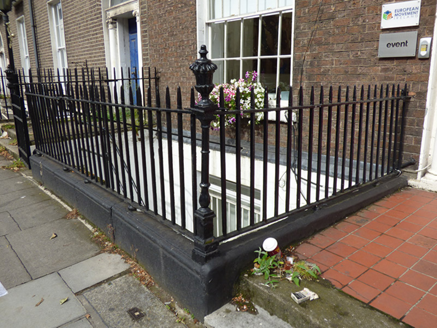Survey Data
Reg No
50100497
Rating
Regional
Categories of Special Interest
Architectural, Artistic
Original Use
House
In Use As
Office
Date
1770 - 1790
Coordinates
316690, 233293
Date Recorded
28/07/2016
Date Updated
--/--/--
Description
Attached two-bay four-storey former house over basement, built c. 1780, having two-storey flat-roofed return to rear. Now in use as offices. M-profile slate roof, hipped to north end and pitched to south, behind parapet with granite coping. Shouldered rendered chimneystacks to south party wall with clay pots; concealed rainwater goods. Flemish bond brown brick walling on painted masonry plinth over painted ruled-and-lined rendered basement walling. Square-headed window openings, diminishing in height to upper floors, with patent reveals and painted masonry sills. Timber sliding sash windows, ten-over-ten pane to ground floor without horns, replacement three-over-three pane to top floor with horns, six-over-six pane elsewhere without horns, uPVC to basement, latter with steel grilles; rear elevation has round-headed stairs window, and variety of window frames. Round-headed principal entrance with painted masonry doorcase, moulded render surround, cornice and fluted frieze with rosettes over Adamesque Ionic columns, plain fanlight and eight-panel raised-and fielded-timber door with brass furniture. Recent ceramic tile entrance platform with two granite steps. uPVC door and window to basement beneath entrance platform, accessed by modern steel steps; diamond black and orange tiles to basement floor. Basement area enclosed by wrought-iron railings with decorative cast-iron posts on painted moulded granite plinth. Yard to rear of plot. Cast-iron coal-hole cover to pavement.
Appraisal
No. 8 Fitzwilliam Street Lower is a late eighteenth-century house, built as part of the original laying out of the street, which began about 1780 in tandem with Merrion Square East and South. The building is characterized by typically well-balanced Georgian proportions. It is enhanced by the fine doorcase with Adamesque capitals, as well as the setting that includes good historic ironwork. The general character is largely retained and this building forms part of a cohesive Georgian row lining the west side of Fitzwilliam Street Lower.
